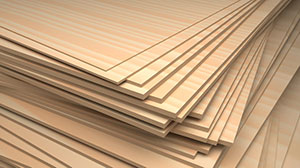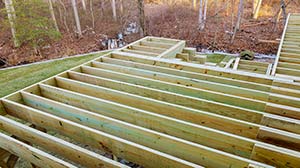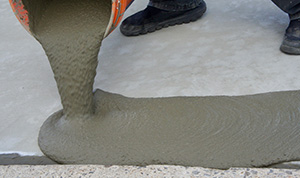
Many individuals assume that if metal objects break, they will require professional assistance. Metal glues, on the other hand, make these jobs simple to execute. In cases where welded bonds and fasteners are important, metal adhesives are now becoming more popular. But which metal adhesive is the strongest?
The strongest metal-to-metal connections are formed with epoxy adhesives. They are made up of two parts: glue and hardener. These factors work together to form a strong, long-lasting bond between metal kinds or between metal and concrete surfaces.
Metal glue and adhesives have many benefits that cancel out the cons of mechanical seals and bonds. However, there are different types of metals; there are also several metal adhesives that you can choose from, including structural and machinery adhesives.
Bonding metals using tapes and glues is highly recommended. However, the wide variety of available adhesive options makes it challenging to select the perfect choice. Here we’ll explore the different types of metal adhesives, their benefits and identify the best option for your needs.
Benefits Of Metals Adhesives Against Mechanical Fixing And Welding
One of the benefits of metals adhesives against mechanical fixing and welding is that they reduce the manufacturing costs by decreasing the number of filler metal, spot welds, and mechanical fasteners required to attach or create a joint of two substrates.
Structural and metal adhesives come with several benefits compared to mechanical fixing and welding. Let’s look at some of the benefits below:
- Since adhesives are hidden between substrates, they offer an aesthetic improvement to mechanical fasteners and welding.
- Using an adhesive gives rise to a clean, smooth surface that doesn’t require much preparation before final finishing. It’s, therefore, possible to eliminate labor-intensive finishing costs, including sanding.
- Adhesives can effectively work in parts and areas that can’t be accessible to welding or mechanical fasteners during the assembly process.
- Mechanical fasteners and welding consume more time compared to metal adhesives.
- Metal adhesives are perfect for joints that have different material thicknesses and dissimilar substrates. Adhesives compensate for differences in the expansion of the materials.
- Adhesives also eliminate the concentration of stress from rivers, screws, spot welds, and other mechanical fasteners while maintaining the integrity of the surface.
- While screws and rivets concentrate stress at the hole, which might reduce the substrate’s physical properties, adhesive distributes the load over the whole bonded area.
- If you apply structural adhesives, you might reduce the final product’s weight since you use fewer mechanical fasteners and welding metals. Manufacturers can also use lighter, thinner materials without being concerned about splitting, crazing, or distortion at the fastened areas.
- There is also the possibility of reducing the chance of corrosion and rust of metals.
- Metal adhesives keep the integrity of bonded materials intact since there is no weakening and distortion from heat while using the adhesives. The adhesives improve the stiffness of structures and offer the necessary force and fatigue resistance.
Characteristics Of The Best Metal Adhesives
The best metal adhesive should be resistant to heat to prevent any cases of melting. They should also be weather and temperature-resistant as well as impact resistance. Another characteristic of good metal adhesives is that their resistant to chemicals, drillable and fillable. Lastly, metal adhesives should resist the aging process.
There are several adhesives for metal that contain these properties:
- Epoxy Adhesives: These adhesives rely on epoxy resin. They are employed mainly in wood processing and for bonding custom jewelry. They are also ideal for metal bonding.
- Polyurethane Adhesives: They provide all the benefits of the very resistant material PU. It isn’t only UV-resistant and consequently resistant to yellowing but also offers resistance to water. You can therefore apply it effectively in outdoor environments.
- Superglues: Finally, superglues are found in most households and are perfect for almost all bonding types. Their main benefit is that they have faster curing.
Although they bond metals permanently and firmly, they are only ideal for spots and small areas of gluing.
There is a further distinction between two-component and one-component metal adhesives. Single-component adhesives are applied in joining substrates, filling, and sealing. Also known as hybrid adhesives.
Single-component adhesives are used in larger quantities compared to two-component adhesives. They also cure more elastically.
One-component adhesives are commonly used for bonding iron since iron displays varying thermal reactions in various situations. It has a distinct expansion coefficient.
Epoxy Resin Based General Metal Adhesives
Epoxy resin-based metal adhesives are highly durable metal adhesives. The product has two components that react with each other immediately when they are mixed.
The good thing is that you can make the mixture yourself. However, there are double-chamber cartridges with which the mixing becomes conveniently dispensed.
Epoxy resin adhesives are highly variable adhesives that can take on all properties beneficial to the user. For instance, they are available as flexible or non-flexible adhesives and fast or slow drying adhesives.
It’s also possible for you to include various additives, including fillers and colorants; however, curing is essentially either gray, transparent, or black.
They’re very resistant to impact and temperature and thus suitable for heavy loads.
1. Gorilla 2-Part Epoxy
- 5-minute set; has several repositioning times for a perfect fit
- Permanent, fast, gap-filling, and strong; Perfect for multiple surface applications
- Perfect for challenging repairs that require a gap-filling, solvent resistance, and durable bond
- It dries clear, ideal for easy and clean finishing.
- Contain a syringe that is easy to use; Separates hardener and barrels or resin to keep epoxy from hardening. The syringe has a cap for multiple uses and dispenses evenly.
The product costs $6.87 on Amazon. Special epoxy-based metal adhesives are ideal for non-ferrous metals, which presents a challenge in bonding work.
Liquid Metal Adhesives Based On Epoxy Resin
These types of adhesives have proven to be temperature resistant for up to 120° Celsius. You can also use them to fill up blowholes, false holes, and standard holes when you apply them as fillers.
You’ll need a powerful adhesive if you want to glue stainless steel or other unique metals.
With liquid metal adhesives, it becomes easier to do repairs on different materials. Such products will show their full potential, mainly if you use them to glue stainless steel, aluminum, cast iron, and various alloys.
2. J-B Weld Original Cold-Weld Steel Reinforced Epoxy
- J-B weld original: It was developed as a perfect alternative to torch welding. It offers lasting and strong repairs on multiple surfaces and provides a stronger bond than steel. It’s ideal for automotive, DIY household, craft repair, marine, among other things.
- Cure and set time: When you mix the tubes at a 1:1 ratio, it’ll take between 4-6 hours to set and between 15-24 hours to cure.
After it has cured, it can be filled, tapped, molded, sanded, and drilled. Its cure and set color is dark grey.
- Dependable and versatile: The product is reinforced with steel. It can withstand a temperature of 287 degrees celsius (550 degrees Fahrenheit). It also offers a tensile strength of 5020 PSI. After it has completely cured, it becomes resistant to chemicals, acids, and petroleum.
- Surface applications: You can apply it on plastic & PVC, metal, concrete, metal, fiberglass, ceramic, and tiles.
- Do It Yourself (DIY): Whether small or big, you can DIY. It offers superior quality, results, and performance for the strongest bond in the world.
The product costs $4.84 on Amazon.
Polyurethane Adhesives
Polyurethane adhesive for metal is among the best products that are ideal for permanent repairs in your house. The metal is perfect for outdoor applications since it’s resistant to UV, water, and heat.
It cures very quickly and never becomes brittle. After drying, it is essential to do mechanical treatment, varnishing, and painting.
3. Gorilla 5002801 Original Polyurethane Glue
- It is incredibly versatile and strong; It’s the best multi-purpose waterproof glue.
- Best for both outdoor and challenging indoor repairs n dissimilar surfaces
- The product is 100% waterproof; It won’t breakdown when you expose it to outdoor elements
- It can be used on stone, foam, concrete, metal, wood, glass, and much more
- The product is solid; It expands three times into metals to create a powerful bond
You can buy the product for $12.49 on Amazon.
Superglue
Super glue is a form of fast-bonding, high-strength, immediate adhesive that can bond practically any material. There is no denying that superglue guarantees a durable and robust connection to metals. If you want to glue one metal to another and only want to achieve a small bond, the ideal option is superglue.
Products under this category have a short curing phase. It presents a disadvantage since superglue isn’t ideal for two-dimensional connections. It’s only used when it comes to spotting gluing.
4. Gorilla Super Glue Gel
- Gel formula: It uses the gel formula that is perfect for application on vertical surfaces
- It has an anti-clog cap that keeps the glue from drying out. After application, it’s Gorilla tough.
- Impact tough: The product is designed for strength and increased impact resistance.
- It has a fast setting and doesn’t have any clamping. The product also dries in 10-45 seconds.
- It bonds wood, rubber, metal, leather, ceramic, paper, and more. It’s, however, not recommended for use on polyethylene products.
The product costs $5.97 on Amazon.
Strong Alternative: Wrought Metal
Wrought metal is plastically deformed to change the shape of the structure and certain mechanical properties, like durability, hardness, and ductility.
Epoxy putty is the perfect solution for you if you want glue metals, especially stainless steel, and want to achieve a powerful adhesive strength. Apart from being the most adhesive bonding and sealing compounds on the market, it’s also easy to use.
With epoxy putty, you can do quick and straightforward repairs on the side. For instance, it’s perfect when your bicycles’ metal part needs a repair so that you can continue with your ride. The Quiksteel wrought metal can be pressed like plasticine into the area that you want to repair.
There is no hiding that the wrought metal has solid adhesive potential, and you can use it on different materials. After the product has hardened, you can process it mechanically.
5. J-B Weld SteelStik Steel Reinforced Epoxy Putty Stick
- The product is reinforced with steel and is non-rusting. It can quickly rebuild or repair anything that is made from metal. It’s also safe when in contact with potable water.
- Set and cure time: After you knead the two-part formula using your hand, the product cures in 1 hour and is set in 5 minutes. Its cure color is dark grey.
- Product strength and features: The product possess a shear strength of 900 PSI. It can withstand temperatures of 176 degrees celsius (350F). It can also withstand intermittent temperatures of 232 degrees celsius (450 F).
- The product is against hydraulic fluids, petroleum, and other chemicals when cured. The good thing is that it can be shaped, drilled, molded, and tapped.
- Surface applications: It bonds with plastic & PVC, copper & brass, iron & stainless steel, Aluminium & bronze, and fiberglass.
- Do It Yourself (DIY): Whether small or big, you can DIY everything yourself. It delivers superior quality, results, and performance for the strongest bond in the world.
The product cost $6.94 on Amazon.
Metal Adhesives Practical Applications
Metal adhesives are perfect for very stable bonding and can be applied for several connections. So if you find yourself riding your bike on the road, it would help to have a metal adhesive in your pocket. With the product, you can quickly repair anything when a challenge presents itself.
The best metal adhesive is also suitable for cracks in the bumper. It’s generally perfect for all metal parts, but also several plastic parts.
When you use metal on your car, the properties below are significant:
- Oil resistance
- Heat resistance
- Resistance to petrol
Some metal adhesives are high-strength, and others that are flexible. Even before you start repairing, always find the adhesive that’s suitable for your application.
A metal adhesive is not only helpful for damaged metal parts. You can also use them to repair your children’s toys, among other uses.
Metal Adhesives On Other Materials
Metal adhesives based on epoxy resin can’t be used only on metallic components. Although they were developed mainly for metals, you can also use them on other materials.
Some of the materials include:
- Stone
- Various plastics
- Wood
- Glass
- Ceramic
- Porcelain
However, It would help if you pay attention to the various surface conditions. For instance, the surface should at least be smooth.
Metal Gluing Instructions
Even before you initiate the bonding process, you should first prepare the substrate’s surface. The step is essential since the material is applied in areas exposed to high thermal and mechanical stress.
You can follow through the steps below to understand how to glue metals using adhesives:
1. Preparatory Work
The bonded areas might break if their surfaces are not exposed to adequate cleaning. It will therefore help if you clean the surface from all possible deposits, including:
- Greases
- Oils
- Dust
- Sealants
- Dirt
- Grate
- Adhesive residues coming from older bondings
You should wear gloves while cleaning the surface. If you want to remove rust with ease, you can either sandblast or grind. You can then roughen the substrate to improve the bonding properties of the adhesive.
2. The Bonding Process
After cleaning the adhesive surface thoroughly, it would help if you allowed the substrate to dry completely. You can then apply the special metal adhesive.
However, you should pay special attention to the manufacturer’s instructions. Depending on the adhesive, you should apply it either on both or single sides. After applying the adhesive, you should join the substrate and fix them together.
For instance, you should hold a metal epoxy-based adhesive together with firm pressure for roughly sixty minutes.
Conclusion
There is no denying that metal adhesives have taken the place of fasteners and welded bonds due to their efficiency. The products reduce the manufacturing costs and offer a clean, smooth surface.
They also eliminate the concentration of stress from rivers, screws, spot welds, and other mechanical fasteners while maintaining the integrity of the surface.
You should pay attention to personal safety when working with metal adhesives, mainly polyurethane and epoxy adhesives. You should also carefully read through the manufacturer’s instructions to achieve effective results.







